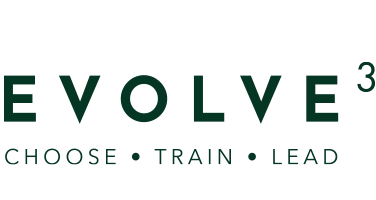
30 May Employee Performance Management
Running a business can be rewarding, however, there may also be periods during which employers need to consider how to improve business standards and outputs. Part of this includes monitoring employee performance, and providing regular feedback.
This article will outline and explain the four key steps to ensuring your business has an effective performance management system in place:
1. Identifying any signs of underperformance.
2. Implementing a performance improvement plan.
3. Monitor whether there is improvement in the employee’s performance.
4. Taking disciplinary action.
If you follow these steps you will reduce the risk that an unfair dismissal claim can be made against you.
- Identifying Underperformance
Who is underperforming and what is the issue?
The first step is to identify whether there are any employees who are not performing at their full capacity, and if this is the case, identify what the action or behaviour leading to underperformance is. This could be a number of things, including:
- Completing work to an unsatisfactory standard
- Missing deadlines
- Failing to follow instructions and complete work as required
- Arriving late to work/absences without reason.
Underperformance may be limited to a single incident, which may not require any formal/informal measures to be taken. However, if this happens continuously over a length of time you need to analyse the extent of the issue. As part of this, you should consider:
- What is the behaviour of the employee that constitutes underperformance?
- How long has this been occurring for?
- How complex was the task set for the employee, and what were the expectations? Compare this to the actual work of the employee, and determine how wide this gap is.
Provide feedback to the employee
Once the issue has been identified and carefully considered, arrange a time to meet with the employee. During this meeting, you should provide the employee with feedback as to how they can improve their performance. Firstly let them know why their present work/behaviour has not been to a satisfactory standard, and ensure that they understand the impacts of their work or behaviour. Finally, set clear and quantifiable goals for them to meet by a set date.
- Performance Improvement Plans
In many cases, providing clear feedback may help the employee improve their performance at work and meet the requisite standard. Another option is to create a performance improvement plan in collaboration with the underperforming employee. This is a plan outlining a series of practical strategies through which the employee can improve their work output. Furthermore, the performance improvement plan should list clearly definable and identifiable goals or targets that must be reached by a certain date. This will allow you as the employer to understand whether improvement has been made, or further steps are required.
Performance improvement plans can be either informal or formal, or can transition from informal to formal if the former is not successful. The main differences between informal and formal performance improvement plans is that:
- Informal performance improvement plans will not lead to disciplinary action. If the employee does not meet the requisite goals, it is likely that the next step would be to implement a formal performance improvement plan.
- Formal performance improvement plans serve as a last step before disciplinary action can be taken against the employee. For example, if underperformance continues following a provided time-frame, you would be able to issue a formal warning, or as a last resort, terminate the employee.
Informal Performance Improvement Plans
After feedback has been provided to the underperforming employee, and some time has lapsed, if the employee has not demonstrated noticeable improvement, it may be beneficial to establish an informal improvement plan with them. This would involve a two-part process:
- Setting up a meeting, and discussing why their work performance is not at a satisfactory level. During this meeting, you should also allow the employee to respond to the claim of underperformance, and express why they have not been able to meet the standards required. This meeting may bring up things that you were previously unaware of, for example, the fact that they were delegated tasks that did not correspond to their position.
- In a written document, clearly summarise:
– How the employee is not meeting the standards required of the position
– Strategies through which they can improve
– What the consequences will be if they fail to show improvement in their performance
– Time period given to demonstrate improvement.
This process should be collaborative, so that the employee feels involved and supported. You should let the employee know that if their performance does not improve within the given time period, then you may need to transition to formal procedures.
Formal Performance Improvement Plans
If the informal performance improvement plan does not yield satisfactory results, then you may need to create and implement a formal performance improvement plan. As outlined above, this is more serious than an informal plan as it can lead to disciplinary action being taken against the employee if there is no improvement in their performance. Generally, you would need to:
- Set up a formal meeting with the employee. You should provide them with reasonable notice about what will be discussed, so that they are prepared
- If your business has a Human Resources team, it would be effective to seek their involvement in the meeting.
- During the meeting, you should:
– Discuss the issues in the employee’s performance, and how this affects the workplace
– Provide the employee with an opportunity to respond
– Explain that you will be implementing a formal performance improvement plan with the aim of improving their work output and performance
– Notify the employee if there is an absence of notable improvement during the time-frame of the plan, then you may be entitled to take disciplinary action against them.
Once again, the process of creating the formal improvement plan should be collaborative, so that the employee understands what the expectations of them are, and what the consequences will be should they not reach a satisfactory standard. Ensure that you schedule regular review meetings to provide feedback on their performance.
- Monitor performance
After implementing the performance improvement plan, it is necessary to monitor the employee’s performance and provide them with ongoing feedback and encouragement. It may be beneficial to schedule regular review meetings to ensure consistency, and the employee is aware of whether they are meeting the expected standards.
In addition to this, as an employer, it is important that you have gathered evidence to show that you have consistently provided feedback and opportunities to improve. This may be useful if you need to take further formal action against the employee if their performance has not improved. This can be through:
- Emails
- Notes from review meetings
- The performance improvement plan that was collaboratively developed and implemented.
At the end of scheduled timeline for the performance improvement plan, you should hold a formal meeting with the employee to review their performance, and discuss whether the aims of the plan have been met. Generally, if regular feedback has been provided to the employee during the period of the performance improvement plan, this meeting should be straightforward.
If the employee has demonstrated significant signs of improvement, and met the standard required of them, then no further action may be required. However, if there has been little to no improvement, disciplinary action against the employee may be appropriate.
- Disciplinary action
It is important to keep in mind that action can be initiated against you by the employee if you take unfair or unreasonable actions against the employee. Therefore, you should ensure that that any disciplinary action you decide to take is equivalent to the level of underperformance demonstrated.
For example, it may be disproportionate to terminate your employee if they have demonstrated signs of improvement, but have not met all the goals stated in the performance improvement plan yet.
Formal warnings
If this is the case, it may be more conducive to issue a formal warning to the employee, and extend their improvement plan for a limited period. Please see our article for more information on this. This provides the employee with sufficient warning, and a further opportunity to improve their performance. Furthermore, this may shield you as an employer from an unfair dismissal claim, if termination is necessary at a later point. If their performance does not improve after this, it would most likely not be unfair or unreasonable to terminate their employment on the basis of underperformance.
Termination letters
Given that terminating a staff member’s employment can have serious consequences, for both you and the employee, it is important that this is used as a last resort. There is always the risk that an unfair dismissal claim can be filed with the Fair Work Commission, and there is a higher chance that such a claim will be successful if procedural fairness and due processes are not followed.
In this way, you should seek legal advice if you intend to terminate an employee on the basis of underperformance. To ensure that you have fulfilled all your legal obligations, and know what your obligations are to the employee after dismissal (for example, you may need to pay them outstanding entitlements).
Key Takeaways
- Providing continuous feedback to employees ensures that they are aware of how they are doing, plus how they can better their performance
- Ensure you are aware of your legal rights and obligations, especially if you intend to take adverse action against the employee.
If you have any questions about reviewing your employee’s performance, or require a specialist employment or business lawyer feel free to contact Lord Commercial Lawyers on 9600 0162 or email us at info@lordlaw.com.au



